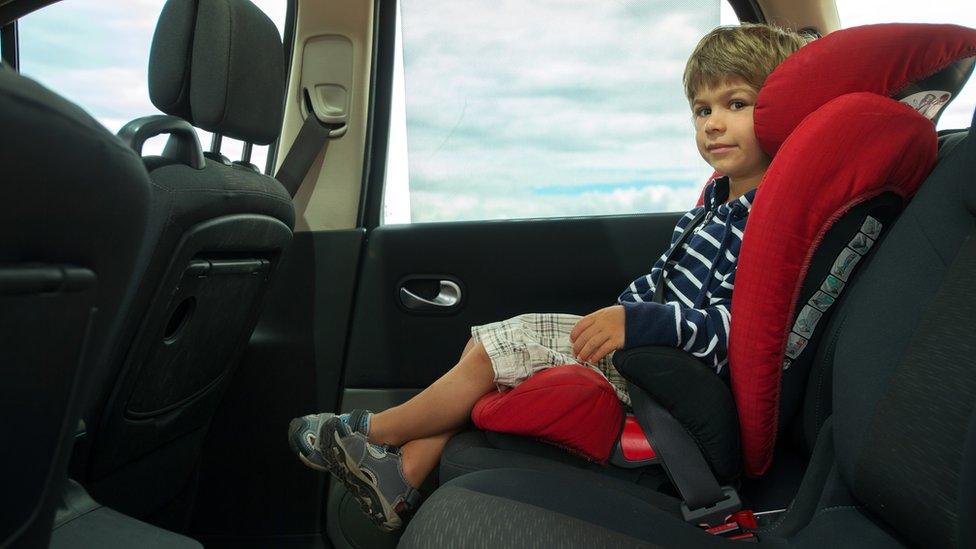Child car seats: Why is it so hard to recycle them?
- Published
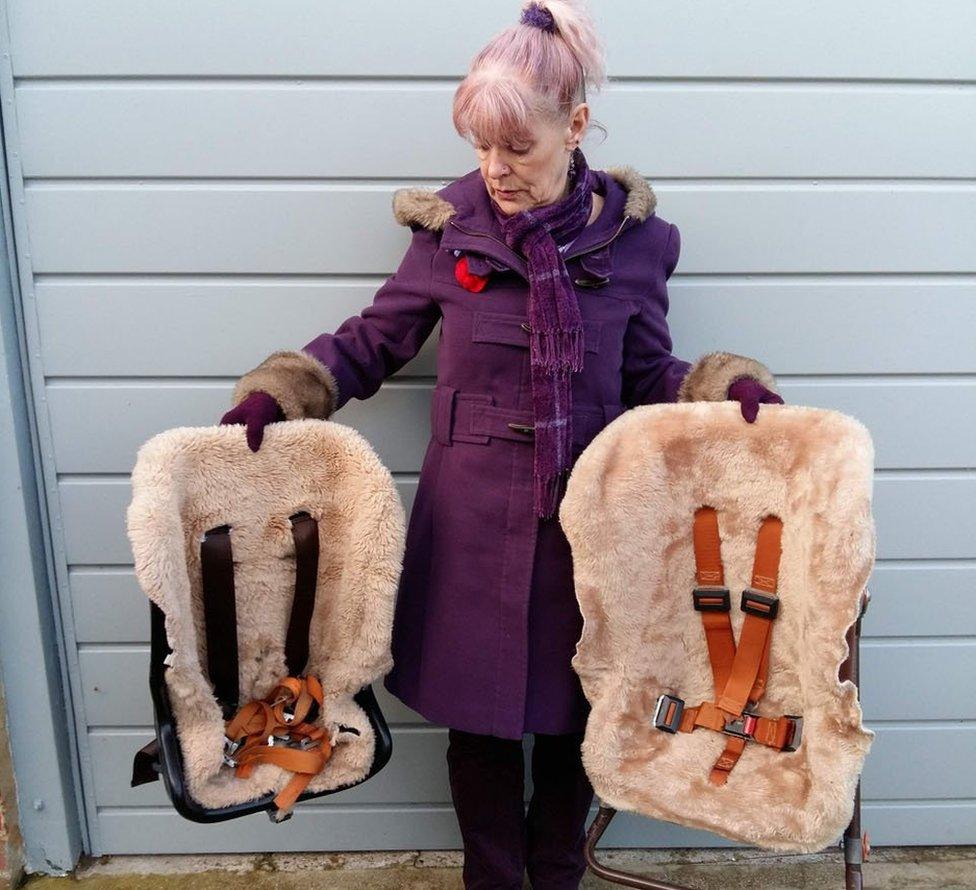
Mel Kirkpatrick says she will not dispose of her children's old car seats until a recycling scheme starts
For Mel Kirkpatrick, 25 years of storing her children's old car seats is a small price to pay for disposing of them responsibly.
"We recycle absolutely everything", the retired midwife says. "I steadfastly refuse to put our children's car seats into landfill."
After moving into a smaller home in Northamptonshire six years ago, Mel, 63, and her husband got rid of unwanted possessions, but struggled to shift their five child car seats.
"I've held onto [them] for 25 years, it's no hardship for me to hang onto them for [longer] if they're going to be recycled properly."
Mrs Kirkpatrick is one of a number of parents who have struggled to recycle their old child car seats.
The law, external requires children to use an EU-approved car seat until they are 12 years old or 135cm tall, whichever comes first, meaning UK families could go through at least two or three different-sized seats.
But what happens to the car seats when they are no longer needed and how can they be disposed of sustainably?
Can you recycle it?
Car seats are hard to recycle because they are made of a mixture of materials - rigid plastic, metal and fabric - strongly bonded together to withstand high impacts.
It may be possible to manually dismantle them to remove their separate recyclable elements - but this takes a lot time and effort.

Even the royals need child car seats to keep their little ones safe on the road
Simon Ellin, chief executive of the Recycling Association, says it has so far proved difficult for manufacturers to create a fully recyclable car seat while still protecting the safety of the child.
So what will happen to your seat if you leave it out with your rubbish or take it to the tip or recycling centre?
The answer varies depending on where you live - and the capabilities of the waste processing companies contracted by your local council.
In some cases, it will end up in an incinerator, which burns waste materials to create energy, such as electricity, while recovering any metals.
In others, recyclable elements such as metal and plastics might be stripped from the seat first.
Elsewhere, old car seats are destined for landfill.
Which system operates in your areas is basically a "postcode lottery", he says, but you can ring your local council to check.
Incineration is the most efficient method, according to Mr Ellin, but critics argue it is bad for climate change and could discourage recycling.
Can you sell it or give it away?
Charity and reuse shops do not generally accept used child car seats and parents are advised against buying them second hand because of safety fears.
This is because, unless they know a seat's history, they cannot be sure it has not been damaged in an accident.
Even if it looks fine, it could have invisible internal damage that could put a child's safety at risk, according to charity the Royal Society for the Prevention of Accidents (RoSPA)., external

A second-hand seat without fitting instructions could also put children at risk, says Robin Osterley, chief executive of the Charity Retail Association (CRA), since it might not be used correctly.
However, it is not illegal to sell second-hand car seats online, with listings available on well-known websites.
Or you might be able to pass it on to a family member. But if you've had the seat for a while, even that might not be a good idea, according to experts, since child car seats have a "best before date".
Timescales differ between manufacturers, but the Good Egg Car Safety website suggests child car seats should not be used for more than six to 10 years, external, which "is a recommendation from America that has been adopted throughout Europe".
What do parents say?
Kayleigh Powell, a 32-year-old mother-of-two from Newbury, in Berkshire, says her children, who are five and three, have already gone through seven car seats.
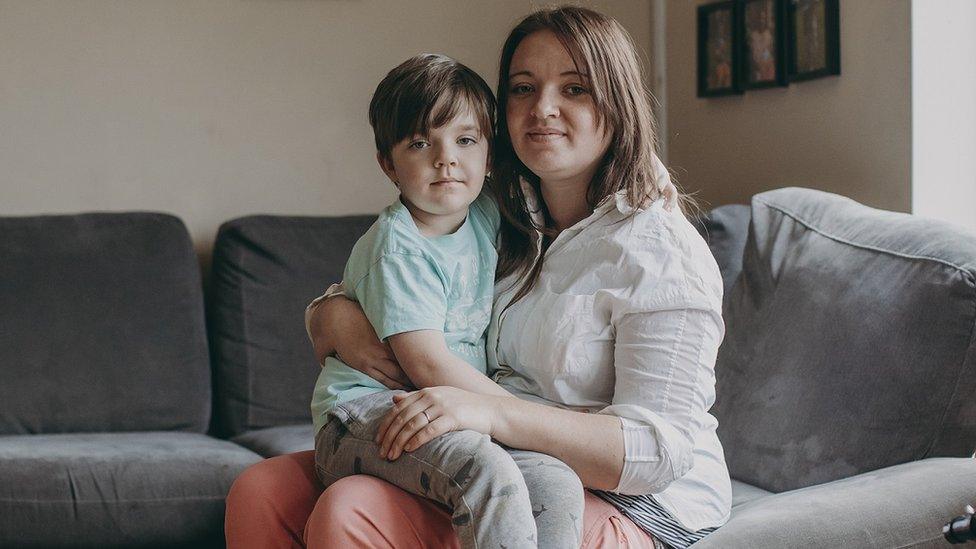
Kayleigh Powell, pictured with her son, Finlay, launched a petition calling for a recycling scheme
Out of "sheer frustration", she started a petition in February asking retailers and manufacturers to support a "clear and accessible" recycling scheme, similar to those trialled by Walmart , externaland Target , externalin America.
"What I find heart-breaking is that these companies - who are making an awful lot of money out of parents and grandparents - seem dismissive of providing some kind of circular economy," she says.
A circular economy aims to get the maximum use out of items by designing them to minimise waste, then re-using and recycling them.
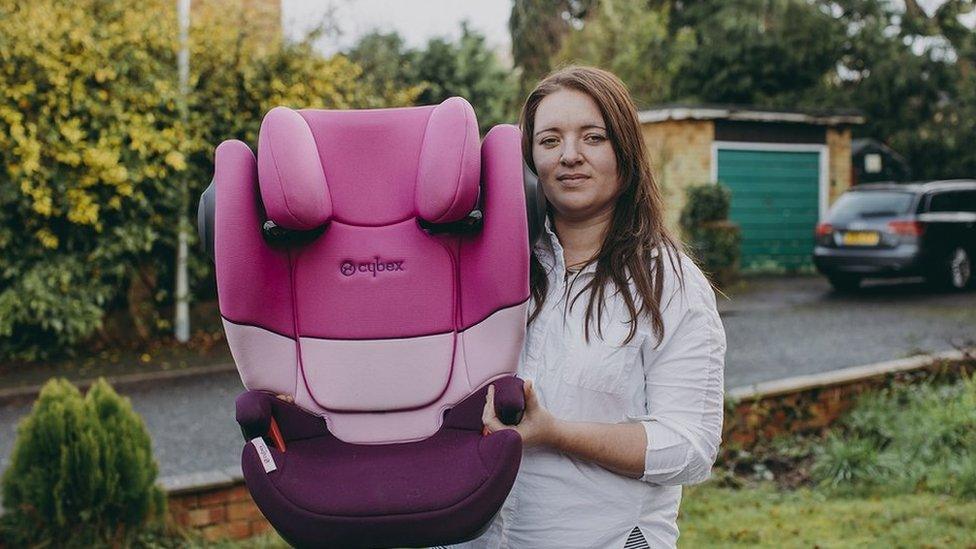
Kayleigh with one of the many car seats her family has got through
Meanwhile, Alison Adamson, 37, says her family tries hard to live sustainably, so being unable to recycle her son's car seats "really bothered" her.
But with little storage space, Mrs Adamson says the family, from Huntingdon, in Cambridgeshire, had no choice but to bin them at their local tip.
She says: "These huge, bulky car seats were sitting in our garage and we couldn't actually get into it with them in there."
Mrs Adamson asked local fire and police stations if they would use the seats for training, but was told they could not take them.
Will this get easier?
One organisation hoping to make a difference is Worcestershire-based car seat design firm JMDA, which spearheaded a recycling scheme in March last year.
It collected 30 used seats and packed them into scrap cars, which were then put through a recycling firm's industrial shredder.
The seats' different elements were separated into recyclable materials: the metals were sold and reused; the plastics were converted into pellets for reuse in the moulding process, and the fabrics were incinerated to generate electricity.
But attempts to roll out this idea nationally have run into barriers.
JMDA approached major brands and retailers for backing but the discussions have stalled due to difficulties over "commercial viability".
The firm's creative and managing director, Derrick Barker, says: "If the retailer doesn't save some money, they won't change their system, and if the recycling firm doesn't make some money, they won't go and collect it, so you sit in this deadlock situation."
He thinks the key is for the government to require for all child car seats to be recycled - forcing manufacturers and council waste disposal contractors to make proper plans for how this should happen - and how it should be funded.
Cllr David Renard, environment spokesman for the Local Government Association (LGA), meanwhile, urges seat manufacturers to use make recycling easier by including "recyclable elements" that are easier to remove when car seats are finished with.
What are manufacturers and retailers doing?
The BBC contacted major manufacturers and retailers to ask what they were doing. Most did not provide comments for publication.
BeSafe, a Norwegian child car seat designer, said it recently removed all Expanded Polystyrene (EPS) from its packaging and had begun to phase it out from its car seats.
EPS is used in car seats for shock absorption, and according to the British Plastics Federation, external, "can be successfully recycled where facilities exist", but is "not currently recycled on a worldwide scale".
Be Safe has been exchanging EPS for Polypropylene cells, which it said were "fully recyclable" and "more durable".
John Lewis & Partners, meanwhile, says it aims to "reduce and reuse where possible" but added it was "not aware of any recycling facilities in the UK that accept car seats".
And Peter Andrews, head of sustainability at the British Retail Consortium, said: "Consumers want to do the right thing, and it is up to government to ensure the infrastructure keeps pace with this."
- Published16 February 2019
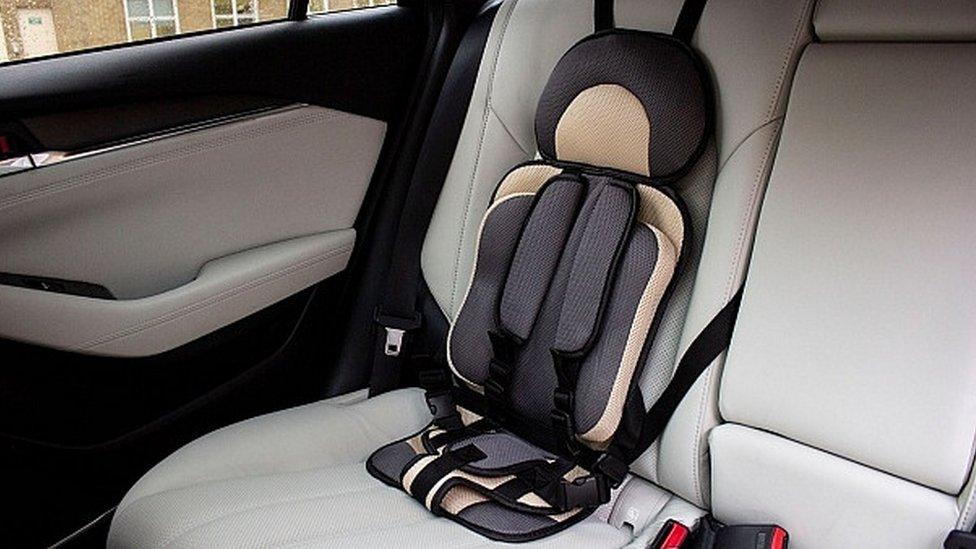
- Published5 March 2019

- Published8 February 2017
